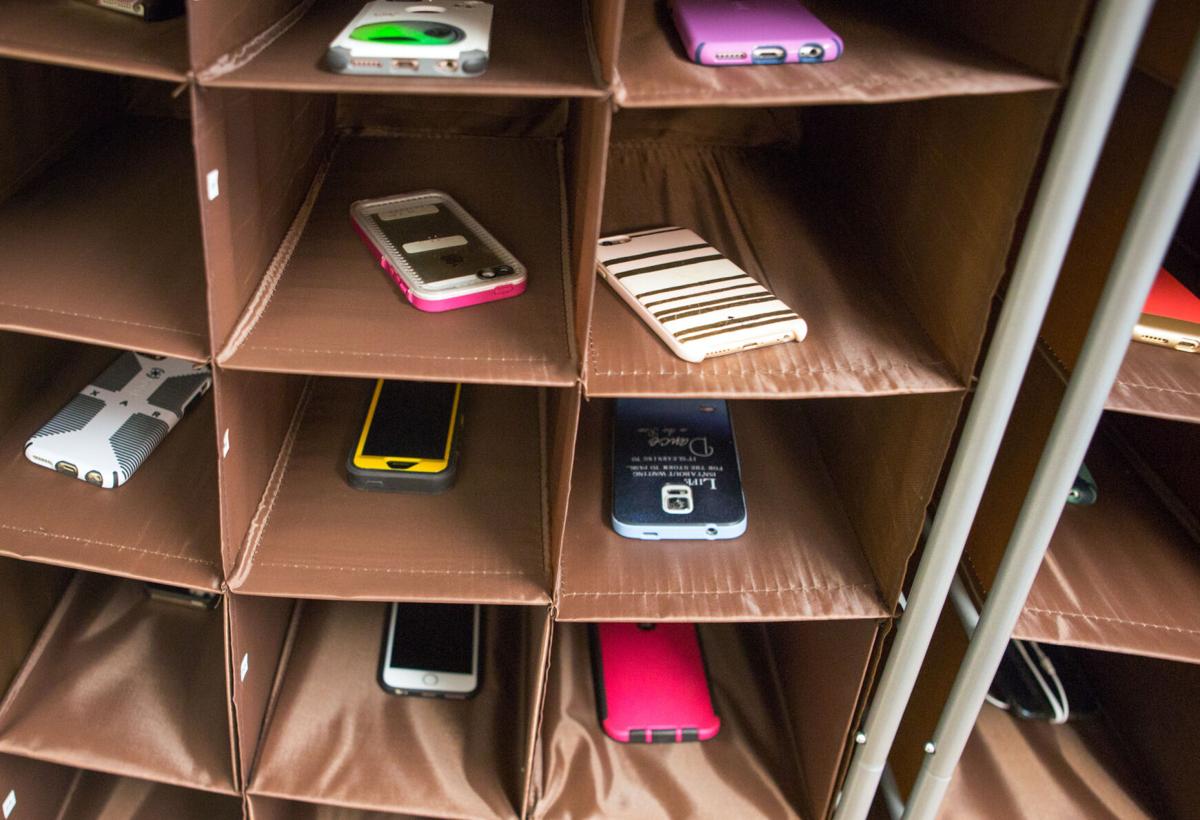A new Arizona law requires public schools in the state to enforce stricter phone-use policies and limit student access to the internet and social media starting beginning this school year.
Gov. Kate Hobbs signed the bipartisan bill ŌĆö HB 2484 ŌĆö into law in April. Most bills signed by the governor are set to become law 90 days after ArizonaŌĆÖs legislative session ends for the year, which was June 27.
ŌĆ£Education requires attention, and attention is exactly what todayŌĆÖs students are being robbed of by addictive devices and endless scrolling,ŌĆØ Rep. Beverly Pingerelli, the billŌĆÖs sponsor, said in a .
The new law states that access to school-provided internet should be governed by schools and restrict access to social media platforms. It says students should, however, be able to access devices for medical purposes or to contact parents and guardians.
People are also reading…
Most school districts across Pima County already have phone-use policies that abide by the law. However, district leaders say schools will need to begin enforcing them more this school year.
ŌĆ£Any student that violates the policy, their phone can be confiscated and theyŌĆÖll be subject to disciplinary action,ŌĆØ said ┤¾Ž¾APPUnified School District governing board president Jennifer Eckstrom. ŌĆ£As it stands now, we believe that weŌĆÖre in compliance.ŌĆØ
TUSD currently requires students to keep phones and electronic devices turned off during instruction time and out of view in a locker, pocket or a carrying bag unless a teacher allows otherwise.
Some parents may be relieved by the bill requirement to allow students to still have access to their phones in case of an emergency, said Marana School District governing board president Hunter Holt. He said parents often worry about what would happen during an emergency, and thereŌĆÖs been nothing to legally dictate access until now.
Holt said the district has seen anxiety rise in students as well when they arenŌĆÖt able to see their phones during class time.
ŌĆ£What weŌĆÖve come up with in our district is thereŌĆÖs a basket or check-in area where students can see their phone, but donŌĆÖt have it physically on them,ŌĆØ Holt said. ŌĆ£They can easily have it accessible if needed or at the teacherŌĆÖs direction.ŌĆØ
Sahuarita Unified School District superintendent Manuel Valenzuela said while the district is in compliance with the law, there are still some issues with managing and restricting smartphone access.
The district will work more with the community this year through meetings and community dialogues to address balancing modern-age technological needs with the distraction and mental health factors of electronic devices, he said.
ŌĆ£The overarching issue here is that technology is continuing to grow and evolve in an exponential rate, and itŌĆÖs our duty to prepare students for the world of today and tomorrow,ŌĆØ Valenzuela said. ŌĆ£Technology has some areas of emerging concern, such as issues with social fragmentation, attention fragmentation, some correlation with mental health issues and even some addictive properties.ŌĆØ
Sahuarita currently has a 1:1 ratio of Chromebook laptops to students, according to Valenzuela, as the district tries to integrate technology into teaching and learning strategies.
ŌĆ£ThatŌĆÖs kind of the goal, is to find that balance point and communicate it with clarity so that all of us in the school community can operate on the same page together,ŌĆØ Valenzuela said.
Vail and Amphitheater School Districts also have phone-use policies in place that require students to put away devices unless instructed otherwise.
















